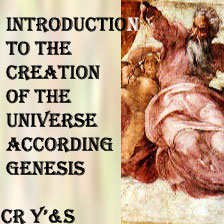| |
CHAPTER 12
A
TUSCANY
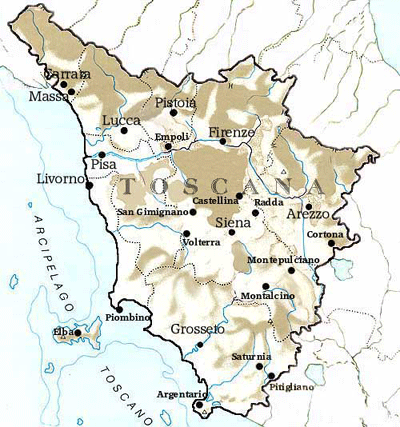 |
THE treaty of Cateau-Cambrésis (1559) brought little peace to France and Spain; but to Italy, the victim of the wars, it gave genuine solace for half a century and more. This difference was due to the direction taken by the religious conflagration. Calvin's influence set northwards and westwards; and thus Italy in the main was sheltered from the blasts which might cause the war embers to flame afresh. The fire in her neighbors' houses, far from endangering her own, favored its reconstruction. Hitherto the aggressive Power had usually been France, but the treaty itself was a confession of failure in Italy; and internal faction was already giving France as much occupation as her most restless spirits could desire. The coming troubles of Spain could be foreseen, while her financial exhaustion was far advanced. If the restoration of the House of Savoy was an admitted check to French expansion, it gave no unmixed satisfaction to the Spanish Crown. Italian dynasties which had dreaded France had hitherto been forced to lean on Spain. Yet even the power of Charles V had been far from absolute. Ottavio Farnese and Siena had severally defied him; the Duke of Ferrara had conspired with Maurice of Saxony against him; Cosimo de' Medici, who owed to him his title, had extorted terms from him. Moreover, the transference of his Italian possessions to the Spanish line effectually changed the situation, though Philip might bear the title of Imperial Vicar. The two Habsburg branches seemed unlikely to act in close concert; and this was all in favor of a certain measure of Italian independence. Spain, in spite of her possession of Naples and Milan, was not quite predominant. Venice watched the vast Austrian hinterland stretching round her northern and eastern frontiers more anxiously than the impoverished Spanish province of Milan, which faced her short and defensible line of fortresses on the west. The loyalty of the Gonzaga of Mantua was by neighborhood, by intermarriage, and by investiture with Montferrat, directed rather towards Vienna than Madrid. Genoa was, indeed, bound to Spain by her financial interests and the influence of the Doria; but her remnant of independence was watched with jealous apprehension. Without control of Genoa Milan was "in the air"; and this control might be at any moment jeopardised by a French fleet, a holiday outbreak of the populace, a whim of the ruling House. The acquisition of Siena had largely increased the power, and therefore the independence, of the Medici. It is true that the coast towns had been lopped off to form the strange little Spanish State, the Presidi; but their garrisons, fringed by the wasted Maremma, must feed either on fish, or on such flesh, fowl, and grain as Cosimo might suffer. In the company of such native States as Venice and Savoy, Tuscany, Mantua, and Ferrara, even a Pope might pluck up courage and call himself Italian; a religious war in Europe might turn to the advantage of his temporal power, which the rivalry of France and Spain had preserved intact. Thus the outlook for Italian nationalism was hopeful. Naples was already asleep; and Milan would probably soon follow her example. Philip's character was believed to be tenacious, but not aggressive. In Italy this forecast found fulfilment. He wished the native States also to be left as undisturbed as possible. If it be true that Spain ruined Italy, her indolence rather than her interference was at fault. The pococurantism of the upper classes, a baleful inheritance from distant generations of Teutonic settlers, was to be the curse of Italy. The damages with which from 1559 she must debit Spain were rather mental and moral than military and political.
1543-1814] Survival of Lucca and Piombino
It is, nevertheless, an exaggeration to regard the Italy of the later sixteenth century as altogether decadent. The wars had produced one great Italian ruler, Cosimo de' Medici, and one great Italian soldier, Emmanuel Philibert. The peace was to convert the latter into an equally able statesman. Both were not merely rulers but creators. The Tuscany of the one and the Savoy of the other were polities totally distinct from those to which they had succeeded. Their character will be found greatly to resemble each other, although they were quite distinct in origin. The municipal despotism and the feudal lordship had reached the goal of absolute monarchy together. During the new epoch Tuscany and Savoy are the centres of purely Italian history, nor are they without importance in European politics. Venice, more powerful and wealthy than either, though she had emerged from the barbarian invasions with no very material loss of territory, was distracted by Eastern difficulties. The position of Mantua and Ferrara was not profoundly altered, though the Gonzaga dynasty had been strengthened by Austrian favor, and that of Este weakened by the withdrawal of France. Ferrara was illuminated by a brilliant literary afterglow, but the sands were running down; and papal greed reduced the oldest dynasty in Italy to the minor Imperial fiefs of Modena and Reggio. This proved that the Papacy was not indifferent to its temporal power, although most of its attention was diverted by the Catholic Reaction and the Wars of Religion. Within a century the not inconsiderable State of Urbino was a voluntary captive within St Peter's net. Parma's one great product, Alessandro Farnese, was wasted on the Netherlands. The republic of Lucca and the lords of Piombino would be content if they could preserve their respective liberty and autocracy from the acquisitive instincts of the Medici. Thus it is that Tuscany and Savoy form the theme of this chapter. In each the government was intensely personal, and the stage was comparatively small; but until the rise of Henry IV it would be hard to find in Continental Europe more competent performers of most difficult parts than were Cosimo de' Medici and Emmanuel Philibert.
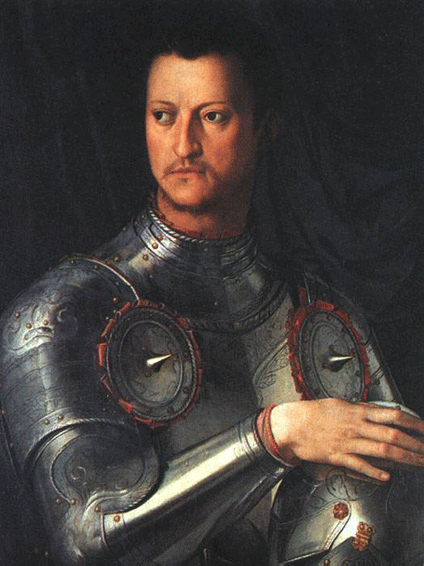 |
The elder Medici had prided themselves on their extension of the Florentine frontiers, but Cosimo by conquering Siena had surpassed them. The two most natural complements of his territory were Lucca and the principality of the Appiani, comprising the headland of Piombino and Elba. Lucca was almost an enclave, and hindered access to the coast north of Pisa. Cosimo, however, failed to annex the republic, as had both Medici and Albizzi before him. The city was rich; the country people were warlike and patriotic. Cosimo saw his chance when the Lucchese Gonfalonier Burlamacchi formed his quixotic conspiracy for Italian liberation; but the nationalist suffered death without inculpating his State, which put itself under the protection of the Infant Philip (1546). The only result was the formation at Lucca of a close and competent oligarchy which was to survive till the end of the eighteenth century.
Disappointment was greater in the case of Piombino, for twice it was actually in Cosimo's grasp. In hostile hands it would be a serious menace to Florentine commerce, of which Leghorn had become the principal outlet. Cosimo claimed it as being originally part of Pisan territory, and as devolving therefore to Florence with its ruling city. Its cession, however, to the Appiani by Gian Galeazzo Visconti preceded the Florentine conquest of Pisa by seven years. The young ruler Jacopo VI, Cosimo's first cousin on the mother's side, was little able to defend himself. Cosimo garrisoned Piombino against Barbarossa in 1543, and in 1548 Charles V gave him the investiture, but after a few weeks withdrew it. In 1553 Cosimo again had actual possession, but by the arrangement of 1557 he only retained the north-western part of Elba with Porto Ferraio, which became the chief protection of the Tuscan littoral, and the model naval port of southern Europe. Piombino itself passed by marriage from House to House until its annexation to Tuscany in 1814.
The history of Cosimo's acquisitions had been surprising; for who could have imagined that the mushroom despot would have warred down and annexed a large independent State, the old irreconcilable foe of Florence? He had imposed terms not only on Siena but on the Spanish House, for Philip fought hard against its cession. But all that the King rescued from the spoil were the coast towns Talamone, Port' Ercole, Orbetello, and San Stefano. When in 1559 the French garrisons evacuated Tuscany, Cosimo could occupy Montalcino and other positions which they had retained. Sovana was alone withheld by its wild lord Niccolo of Pitigliano; but his violence later enabled Cosimo to annex it, while the little Orsini State itself fell to Tuscany under Ferdinand. A tempting invitation had to be refused from consideration for the European Powers : the Corsicans, in revolt against Genoa, offered Cosimo their island, but he was forced to avert his eyes.
Reorganisation of Siena [1559-69
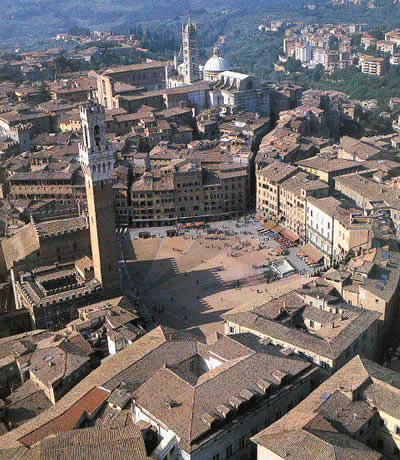 |
Once lord of Siena, Cosimo did his utmost to heal its wounds, granting amnesty and restitution of property to all who would return. Siena was spared the humiliation of submission to a rival city; she remained a distinct State, with her elective sovereign magistracy, her rule over subject towns, her original custom lines. Her union with Florence, like her former union with Milan, was personal only; for Florentines and Sienese were equally Cosimo's servants. Nor was the Sienese constitution ostensibly much altered. Cosimo himself gave it, during a long visit, its permanent form. He did not suppress the Monti parties which, without having any formal place in the constitution, had nevertheless by usage become the groundwork of the fabric; but he struck from the several party registers families whose poverty might favor corruption or disable them from public service. The Great Council was abolished; but each of the four Monti henceforth elected a quarter of the Council of a Hundred, and was represented in the same proportion in the curious Sienese institution called the Balia, a permanent committee of government elected from the Council. The Signoria and the office of Captain of the People were retained. Thus, as at Florence, the more democratic Council disappeared; but the total change was less, for the old sovereign magistracy remained. The form of the constitution, however, mattered little; for all real power was vested in the ducal Governor, who presided in councils and committees, but did his effective work through a bureaucracy dependent on himself, leaving to the native magistracies the less important patronage and non-political jurisdiction. The first Governor was Cosimo's intimate friend Agnolo Niccolini. Partly, perhaps, in consequence of this good beginning, Siena never hereafter gave trouble to the Medici, but became so welded to their House as later always to claim a member of it for Governor.
Cosimo's State was now strangely composite. He ruled Florence by virtue of popular election and Imperial investiture, while he held Siena as a fief of Spain. Interference from the Austrian Habsburgs seemed little probable; but the suzerainty of Siena and the King's retention of the Presidi formed an uncomfortable tie to Spain, which Cosimo keenly felt, when the outbreak of civil war in France weakened the chance of maintaining a balance of power in Italy. The desire to give some higher unity to his position prompted him to seek a more exalted title. To this end Pius IV wished to create an Archduchy of Tuscany; but he died before the Bull was issued.
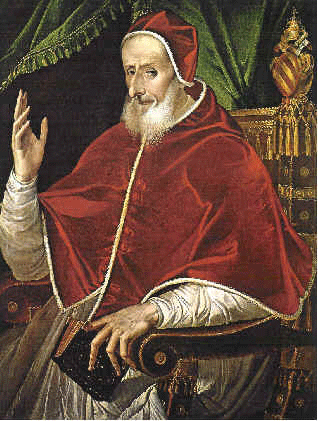 |
In 1569 Pius V created Cosimo Grand Duke of Tuscany. The Emperor declared against the creation, and drew Philip II to his side. Foreign Courts hesitated, with the exception of England, while the Dukes of Ferrara and Mantua, and later the Duke of Savoy, clamorously protested. When, nevertheless, Cosimo was solemnly crowned at Rome, the Emperor's ambassador ostentatiously left the hall during the ceremony. His master ordered the German princes not to recognise the title, but he was not generally obeyed; and his hopes of a reversal were disappointed, when Gregory XIII confirmed his predecessor's action.
The withdrawal of the French from Tuscany in 1559 relieved Cosimo from all fear of exiles without and malcontents within. Hitherto, he had ruled by terrorism : now, he could afford to slacken the reins and reduce the taxes. Yet it is impossible to divide his administration by this date; and this must be the justification of a wider survey of its character.
1537-69] Accession of Cosimo
Cosimo's election after Alessandro's murder in 1537 was in accordance with Charles V's act of settlement of 1532; for he was the nearest legitimate agnate of the House after the murderer Lorenzino, who was debarred by public decree. On the father's side he was descended from the brother of the elder Cosimo, pater patriae, while his mother was grand-daughter of Lorenzo. His father, Giovanni delle Bande Nere, son of Caterina Sforza, may have inherited through her the military genius which had cast lustre upon Florence. This made Cosimo's election popular, though no one knew the capacity of the handsome athletic youth of eighteen, who had been well brought up on slender means. Very characteristic of the Italian despotism was the combination of hereditary right and election by the Council of Forty-eight, which now represented the Commune. Cosimo was the choice of the Moderates, headed by Guicciardini, against the extreme Mediceans, who preferred a bastard infant of Alessandro's, and against the republican aristocracy. The new ruler was not styled Duke, but head and chief of the Republic; the appointment to important magistracies was vested in the Forty-eight; and his income was limited to a fixed sum. The Emperor had a better security, for his general, Alessandro Vitelli, had on Duke Alessandro's murder seized the fortresses of Florence, Pisa, and Leghorn.
Francesco Guicciardini (March 6, 1483 - May 22, 1540). A friend and critic of Niccolò Machiavelli, he is considered one of the major political writers of the Italian Renaissance. Guicciardini is considered as the Father of Modern History, due to his use of government documents to verify his "History of Italy." |
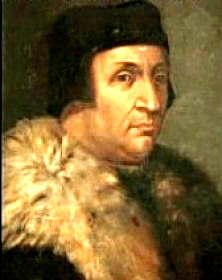 |
Guicciardini intended to lead the government, and would have granted an amnesty to the several groups of exiles of Alessandro's reign. When negotiations failed, Filippo Strozzi and his sons attempted to surprise the new ruler, but were themselves surprised and beaten at Montemurlo. Cosimo acted on Machiavelli's principle that cruelty should be short and sharp. The leaders in his power were executed in batches. Filippo Strozzi, who was Vitelli's prisoner, later committed suicide, or was possibly murdered. Henceforth there were few political executions, and these for ascertained conspiracies. Strozzi's sons in French service stimulated the resistance of Siena; but to the end of the Medicean dynasty there was no further civil war, no armed collision between State and rebels. Cosimo's victory was not unpopular with the people, for he had avenged it on the nobles who had robbed it of its liberty.
New constitution of Florence [1532-64
Cosimo had won a victory, not only over the opposition, but over his own government. Guicciardini retired to his villa, to eat his heart and write his history; and the Prince gave his chief confidence to the mere business-man of the previous reign, the Secretary Francesco Campana. The Constitution could easily be ignored, for it had no roots in popular affection. Clement VII had swept away the older institutions, which Charles V in 1532 had spared, replacing them by the Councils of the Two Hundred and the Forty-eight. The more effective power rested with the latter, from which every three months were elected four members who formed the Prince's Privy Council. With him in conjunction with these Councillors lay the initiative power. The old departmental Committees, the Otto della pratica, the Otto di Balia, the Sei di Mercanzia, the Ruota, had survived, but in strict subordination to the Forty-eight. The merit of this constitution was that administration for the first time really rested with citizens of experience. With time and an easy prince it might have hardened into an official oligarchy; but Cosimo was not the ruler to allow other powers to outgrow his own. He made few ostensible alterations, and the Forty-eight preserved its dignity; but he quickly learnt the older Medicean art of supplanting without destroying institutions that might become encumbrances.
The supposed functions of the changing Privy Council were soon usurped by the Pratica secreta, an informal committee of experts whom Cosimo might think fit to summon. From the nucleus inherited from Alessandro he developed his own bureaucracy. In this he took Lorenzo as his model, preferring men of lowly station, not Florentines but shrewd Tuscans from the provinces. Thus Campana came from Colle close to the Sienese border; Lelio Torelli, who succeeded him, was a foreigner, a Romagnol; Bartolommeo Concini, the trusted minister of later days, was of Terranova on the Arno. Lorenzo's hated secretary, Piero da Bibbiena, found a counterpart in Bernardo, of the same clever Casentino stock. Agnolo Niccolini, Archbishop of Pisa, the only noble to whom Cosimo gave high administrative office, recalled his namesake driven from Florence on the fall of Piero II. The old committees still did the executive and judicial routine work; but the permanent secretaries advised with authority on important cases, while measures receiving the Duke's approval after discussion in the Pratica passed for laws.
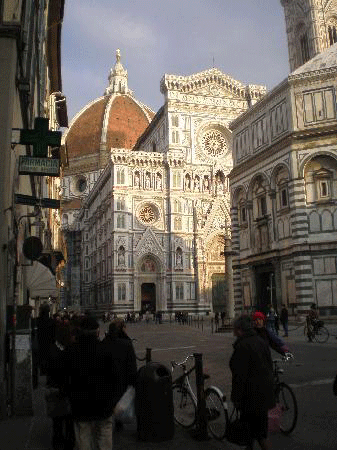 |
Both within Florence and without, order now began to reign. A check was put on the arbitrary injustice and corruption of the podestà and other Florentine officials who ruled the subject cities. Pistoia's sanguinary factions were ruthlessly pacified. In Florence criminal law was executed without fear or favor; there was no straining and stretching of the civil law in party interests. Magistrates were highly paid, and forbidden to receive presents. Justice was made the more effective by being simplified; the varying laws of the territory were superseded by the Florentine criminal code, though the municipalities were propitiated by the profits of jurisdiction. Even the terrible law of treason, the legge Polverina, was but the codification of scattered and inconsistent ordinances or practices long in force; its severest penalties had precedents in those recently inflicted by the republic on Medicean partisans. Severity produced conspiracy among the more corrupt aristocracy; but those who conspired now at least knew their liabilities. For the law-abiding citizen justice had never been so even. Citizens in general, wrote Guicciardini, care little about forms of government, if only justice is well administered. The tyrant gave Florence the justice which liberty had denied her.
Police and religion
To Cosimo's intelligent and incorrupt magistracy his efficient police and elaborate system of espionage were invaluable adjuncts. His spies were everywhere, it was believed in every household, in every church. Wherever Florentines congregated abroad, secret agents were in their midst. Each night the chief of police sent in a list of all men met in the streets, armed or unarmed, with lanterns or without. If a shot were fired or a knife thrust home, the gates were closed till the criminal was found. Cosimo's first act on rising was to scan the list of cases in the Courts. The envoy Fedeli, accustomed to the severity of Venetian justice, yet wrote with awe of the secret prisons from which news never issued.
For the ruler of Florence religion also had to be a matter of police. Twice a republican outburst had accompanied a religious revival at once anti-Medicean and anti-papal. The doctrines of Savonarola and of his more fanatical successors in 1527-30 were not technically heretical; but during each movement the Pope's authority was rejected, and heresy follows close on schism. If Florence herself was comparatively untainted by Italian Protestantism and Unitarianism, she was dangerously near to Lucca and Siena, the homes of prominent reformers.
Cosimo was really religious in his Medicean way, and felt disgust at the wild reaction against religion and morality which had disgraced the restoration under Alessandro. His welcome of the disciplinary decrees of Trent, his efforts to reform monastic life, his introduction of the Jesuits, his choice of Lainez as confessor, were proofs of his desire to take the best that the Catholic revival could offer. Yet political motives doubtless underlay religious. In spite of some formalism and more superstition, the religion of Florence was genuine, and the feeling which had made Savonarola's triumph possible spread far beyond the Piagnoni. The churches were always full, the clergy generally popular. Thus Cosimo's respect for religion won the regard of the middle and lower classes, and of no small section of the higher. Through the clergy he could control the people. The parish priests acted as a religious secret service, furnishing lists of church attendance, and even, it is said, information of the number of wafers used in the Sacrament. Nevertheless if religious bodies seemed dangerous, their character gave them no protection. Suspecting that San Marco and the associated Houses were keeping alive the republican spirit, he summarily ejected the Dominicans, and replaced them by Augustinians, whose convent of San Gallo, built for them by Lorenzo, had been destroyed during the siege. In this he went dangerously far, and was forced by threats of interdict from Paul III to restore the friars. No one more strongly insisted on the evils of episcopal non-residence; yet he kept Archbishop Altoviti out of his see of Pisa for seventeen years, because, though non-political himself, he was son of the anti-Medicean Bindo Altoviti. This action will recall Lorenzo's exclusion of Archbishop Salviati from the same see; while from the early Medici also Cosimo inherited his suspicion of the religious and charitable lay guilds, the secrecy of whose procedure undoubtedly offered opportunities for conspiracy. Of even longer standing was Florentine insistence on State control over the Inquisition. Cosimo's difficulty here was great, as he warmly sympathised with the objects for which the Council of Trent had strengthened it.
Heresy found no favor with him, if only on political grounds; nevertheless, in the case of individuals he had a certain breadth of view. He has been blamed for allowing the Inquisition to arrest Pietro Carnesecchi at his own table. Cosimo had long protected him, and believed that his influence at Rome could save him a second time; but Carnesecchi's steadfastness rendered mediation abortive. Stranger still was Cosimo's continued regard for Lelio and Fausto Sozzini (Socinus), after their anti-Trinitarian tenets were suspected or declared.
Abroad his sympathies were for orthodoxy. He assisted Charles IX with money in the First War of Religion, and in 1568 sent a strong contingent to the papal army employed against the Huguenots. Much doubtless depended on his political relations with the Papacy.
To the Farnese he was always hostile; and under Paul III Rome was the breeding ground for anti-Medicean plots. Cosimo avoided active collision with Paul IV, but on his death secured the election of Pius IV, who was brother of his own general, the Marquis of Marignano. Now he became the Pope's close friend and counselor, visiting him at Rome, reconciling him with Philip II after their quarrels over the Council, persuading him to abandon the obstructive policy by which Paul III had alienated the Fathers of Trent and wrecked the earlier meeting.
The Cardinalate of Cosimo's son Giovanni, when only seventeen, recalled to Florentine memory that of yet another youthful Giovanni de' Medici. The boy had not the high fortunes of his namesake; but on his tragic death his hat was conferred upon his brother Ferdinand, who was to become Grand Duke of Tuscany. Papal favor was continued under Pius V, who steadily supported Medicean interests against the Houses of Este and Farnese, and created the Grand Duchy of Tuscany in defiance of Imperial protests.
Eleanor of Toledo (1522– December 17, 1562), with her son Giovanni, painted by Bronzino in 1545. It's considered the first state portrait to depict a ruler's wife with his heir. The picture was intended to demonstrate the wealth, domesticity and continuity of the Medici. A much repeated myth tells this dress served as her shroud. However, newer research has examined her funeral dress and found it to be another |
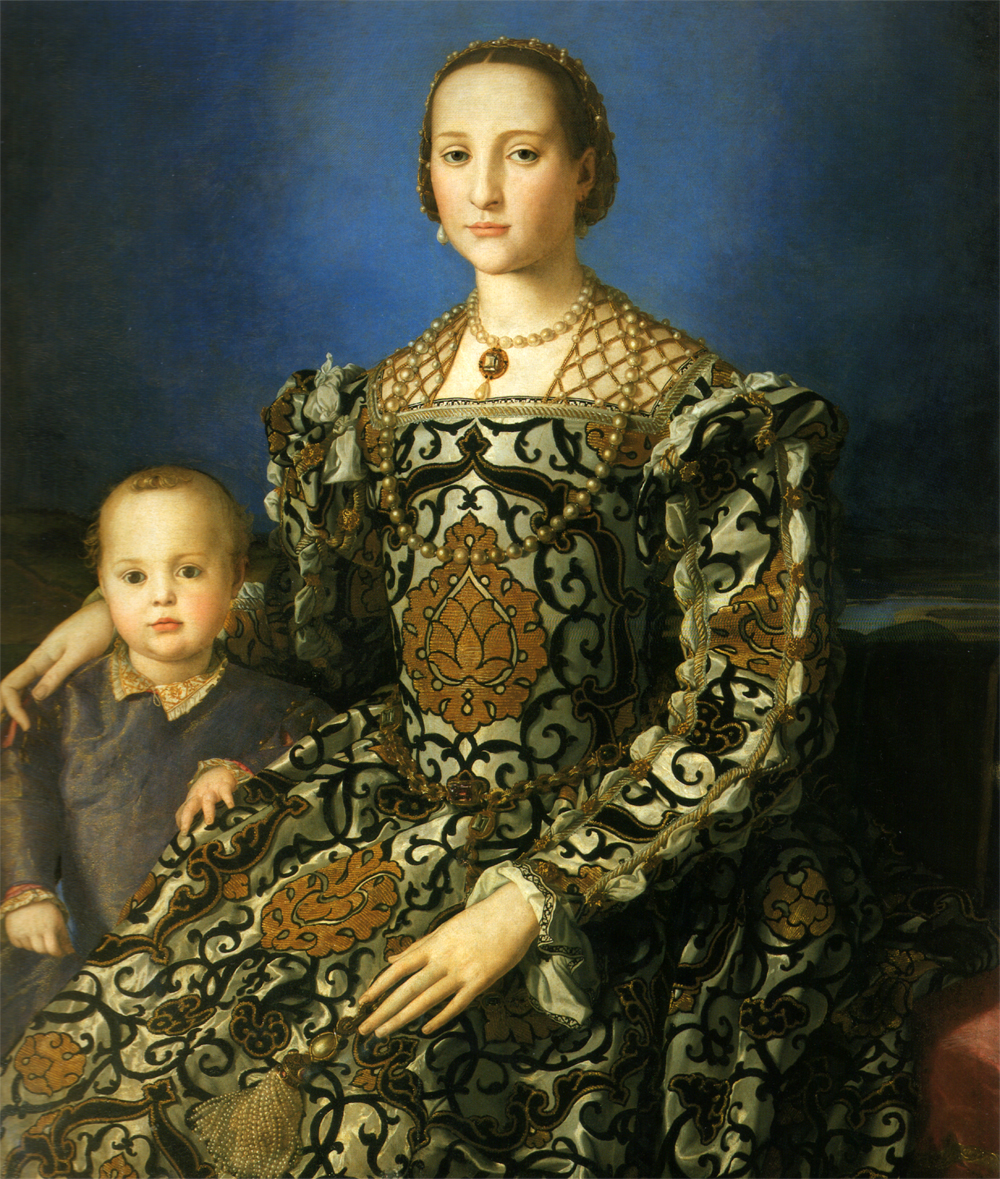 |
1537-71] Army, navy, and finance
The national militia which Machiavelli had once raised to support his theory was by Cosimo revived on a larger scale. Of his 30,000 good troops the best 7000 were recruited from the conquered Sienese. Florence and Pistoia were exempt from service, from precaution rather than from privilege; there was risk in arming the capital and the neighboring city, whose factions had proved infectious. Cosimo boasted that he could mobilise his militia in five days. He praised their loyalty, asserting that, unlike the mercenaries, they never deserted during the Sienese war. Had it been needful, he could doubtless have relied on them against Florence. His attempt to raise a yeomanry from the upper classes did not meet with like success; but he kept in his pay German, Swiss, Corsican, and Italian colonels, to raise mercenaries if required. His artillery was excellent, and the more exposed southern frontier bristled with well-armed fortresses. The peasantry were forced to store their grain and live in the walled cities, which secured their provision mart and also rendered the country-side inaccessible to invaders.
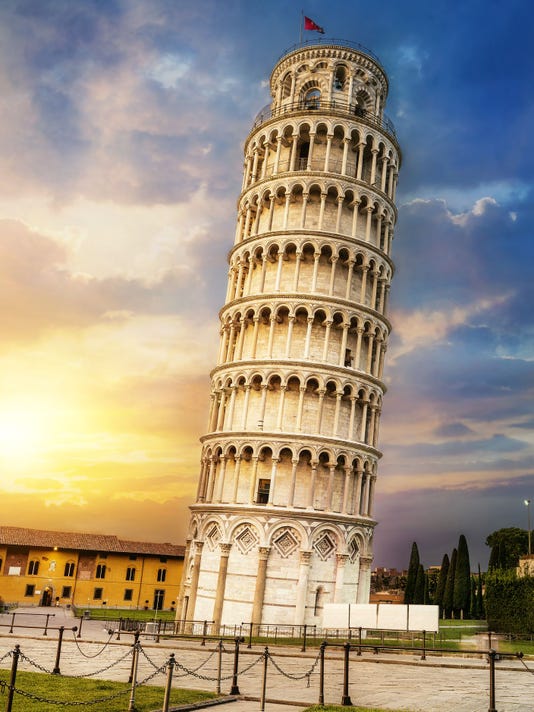 |
A prince, said Cosimo, should be strong alike by sea and land. At Pisa he built docks, and he made Porto Ferraio a fine naval harbor. The immediate difficulty was the total lack of a national marine. The Republic of 1494-1512 had not owned a single galley, and could only blockade Pisa by hiring Genoese pirates. To remedy this, Cosimo introduced a seafaring element, especially into Elba, from Greece, Sicily, and the Levant. Very successful also was his new naval Order of St Stephen, whose members were pledged to war against the infidel. This Order was confined to the nobility, and intended to interest them in State service, to attach them to the dynasty, to wean them away from faction and the pursuit of wealth. The Knights were endowed with Commanderies founded by the State or by wealthy private families. They won distinction at Penon de Velez in 1564, and at Lepanto in 1571. But the little fleet never reached its intended number of twenty galleys, and could scarcely keep the sea when the Barbaresques appeared in force. On the other hand it paid its way, for Cosimo used it for his private commerce; while his successor extended its functions to piracy, which brought him into trouble with Venice.
In no department was Cosimo's absolutism more conspicuous than in finance. The long Sienese war entailed expenditure that few Princes could have borne. To meet it he added new sources of revenue to old. Import and export duties kept rising; the standing property-tax was supplemented by a general income-tax of seven per cent. Among other expedients were a grist tax, a meat tax, and State lotteries. Forced gifts and loans had been exacted under all forms of government; and by such the war was largely financed. The gifts, which were not repayable, were widely spread; but the loans were levied only from the rich and were not unpopular, because they bore good interest, and the capital, contrary to former experience, proved to be secure. So also Cosimo faithfully paid the arrears of the salaries of State officials, which he had suspended at an anxious crisis. He knew the advantage of good credit; he could borrow in the European markets at a far cheaper rate than the Emperor or the Kings of France and Spain. Heavy as were the burdens, they were, perhaps, more tolerable than of yore. The taxes were not now used as daggers wherewith to stab political opponents : income rather than partisanship was the basis of assessment. The revenue was no longer farmed, but collected by ducal officials, rigorously supervised and audited. Cosimo told Fedeli that prevention of robbery had been his only difficult task; he believed, however, that now no minister could steal a farthing.
Pisa and Leghorn [1537-64
Cosimo was no mere fiscalist; he not only tapped but filled the reservoirs of revenue. He revived the decaying silk and woollen trades, and could boast of an unprecedented production of cloth. The smaller towns and villages, to which Florence had jealously forbidden manufacture, now plied their looms. By disobeying Charles V's orders to the Italian cities to eschew the fairs of Lyons, Cosimo drew trade from Genoa and Lucca, while he captured the lucrative trade in brocades with Sicily and Spain. Mercantilist as he was, he sympathised with the physiocratic leanings of the Florentine gentry, who had made the scientific development of their estates their chief interest. War had annihilated their efforts, but peace of itself did much to redress the balance; and Cosimo, like the earlier Medici, set a personal example in scientific farming and fruit-growing. He took a lively interest in the silver mines of Pietra Santa, the marble quarries near Carrara, and the anthracite discoveries on the Upper Arno; concessions were obtained for working the alum of Piombino and the iron of Elba. He endeavored, as did the early Medici, to bribe Pisa to loyalty by material prosperity. The city was made quite healthy by good drainage; building materials were admitted free; and ships built there paid no harbor dues in Tuscan ports. Manufactures of glass and coral were introduced; Portuguese Jews and Greeks were tempted to settle by the promise of toleration.
In 1543 the University of Pisa was reopened. Italy was ransacked for distinguished professors, and Tuscans were forbidden to take degrees elsewhere. Pisa became both an intellectual and social centre, for the fashionable Order of St Stephen had its headquarters there, and the Grand Dukes from Cosimo downwards made it a favorite residence. Nothing, indeed, could tempt the old nobility back to Pisa, and the river-port was too near the seaport of Leghorn to recover the commerce of the past; but at least her stateliness and brightness were restored.
The importance of Leghorn had been long recognised. When Maximilian besieged it in 1496 it was described as being of more vital importance than Pisa, as the very eye of Florence. Its population had dwindled to one thousand, but Cosimo made it one of the busiest ports in the western Mediterranean, although it was to owe yet more to his son Ferdinand. Siena at once recovered much of her prosperity and population under Cosimo's level absolutism. From 1559 he set himself to reclaim the Sienese Maremma, and drain away the malarious waters pent up among the low undulating hills by impervious banks of sand and shingle. Not content with a generous scheme of repatriation, he brought agricultural colonies from the Friuli, from Mantua and Ferrara, from Parma and Piacenza; all necessaries were imported free, and a fair was established at Grosseto. The grain trade was revived, but at a great sacrifice of life, for the Lombard colonists could not resist the pestilential climate. Among the victims of his brave attempt were two of Cosimo's sons and his wife.
There were, of course, drawbacks to this beneficent economic autocracy. It was calamitous, wrote Fedeli, that all the rich and noble families of Florence should be enslaved by one Prince who had in his power all private and public wealth even though they believed that it served them right. Cosimo was not above contemporary prejudices or personal interests. He would make a revenue and a reserve at almost any cost. Before his death the industries which he had stimulated were somewhat waning, and trade was slipping away to the cheaper papal port of Ancona. He became a banker like his forefathers; and the banker's interest was not always coincident with the State's. Speculation in grain became almost a monopoly. Popular prejudice, indeed, had prevented free export from the Maremma, which might have made its colonization a greater success; but the Duke himself, while liberally supplying the very poor, hampered production by restrictions on the market. His dealings in the woollen trade were in unfair competition with his subjects; he was suspected of elbowing the wealthier families out of trade, lest wealth should make them politically dangerous. On the other hand, he paid off from his private resources the debt of the Sienese war; and, while greater monarchs left their States in bankruptcy, Cosimo bequeathed a well-filled treasury.
Literature and art under Cosimo
In his personal life Cosimo retained much of the citizen simplicity of the elder Medici. There was no sumptuous Court, no exotic ceremonial, no separate establishments for wife and children. Domestic expenses were carefully watched; and the Duchess, though liberal in alms, was reported stingy. The Duke disliked the attentions in which most crowned heads appear to take pleasure. He travelled, he would say, with a large suite, because he wished to be self-sufficient, and so allow his subjects to attend to their own affairs. On occasion he could inspire awe; but he had inherited the Medicean sociability and love of town and country pleasures, the passion for tournaments, pallone, and the chase. He could then throw off his dignity, joke with his companions, and put them at their ease. But, amusement over, he withdrew into himself, assuming his austere air at any sign of forwardness, so that it became a saying that he duked and unduked himself at pleasure. His pride, however, was Italian, and not Spanish or German; and it was due to him and his second surviving son, Ferdinand, that Florence and Tuscany escaped the fate of almost every other Italian province, that they never lost the air of freshness, freedom, and simplicity, which Montesquieu in the eighteenth century found so pleasant.
Artistic and literary appreciation was a heritage from both lines of Medici; and, as with Cosimo the Elder and Lorenzo, it was politically valuable. Cosimo's new historical school comprised Varchi, Adriani, and Ammirato, while Paolo Giovio printed his histories under his auspices. The supremacy of Tuscan speech was all in favor of the ambitious Tuscan ruler. Thus to the amateur Accademia degli Umidi he gave the national title and official position of the Accademia Fiorentina, enjoining the duty of establishing rules which should give Tuscany a permanent classical prestige. Of this the Accademia della Orusca was the outcome in the immediate future, while Varchi and Gelli by their lectures on Dante and Petrarch refreshed the memories of the past; and the restored Cathedral once more echoed the tones of the medieval religious poet.
Firenzuola and il Lasca contributed dimple and smile to the more serious aspect of literature. In Cellini and Vasari, Cosimo can boast the autobiographer and biographer who of all Italians have, perhaps, the most enduring fame : and it is characteristic of Medicean versatility that in their persons Cosimo linked the art and letters of his reign. His eager interest in Cellini, his close friendship with Vasari, his friendly correspondence with other leading artists, prove at the same time a love for art above that of the princely patron and collector. He did his utmost to woo Michelangelo back to Florence, consulting him on all artistic enterprises, promising him any official honors that he might choose, visiting him with sympathetic reverence at Rome. The Academy of the Fine Arts, the Arte del Disegno, was the embodiment of his monarchical, organising spirit, giving social unity and collaboration to painters, sculptors, and architects.
From Cosimo date the characteristically Florentine arts of mosaic and work in porphyry. His were the collections which formed the nucleus of the Uffizi gallery; he completed and opened the Laurentian Library. Yet nature, perhaps, appealed more to his practical turn of mind than even art or literature. He founded the School of Botany at Pisa, where the Botanical Garden (1544) is only just junior to that of Padua. Among his chief delights were his herbarium and his Physic Garden by San Marco; nor were the pleasure-gardens of the Pitti and the family villa at Castello without their scientific uses.
At Pisa too Vesalius taught; while at Florence doctors and chemists underwent reforms as drastic as their antiquated remedies. A few years more of life, and Cosimo would have been the lord of Galileo; but this honor was reserved for Ferdinand. This record of art, literature, history, and science would prove the steps of intellectual decadence to be at least extremely slow.
Character of Cosimo's rule
Cosimo's creation was entirely new, for there was no concealment of the tyranny which stood confessed: the sham republicanism of the earlier Medicean period had vanished. Had Cosimo been more academic he might be suspected of having borrowed his principles direct from the new political philosophy. But he was an absolute prince in character, even in appearance. To those who obeyed he was a kindly ruler, and not ungenerous in offering opportunities for repentance. In his princeliness there was no smack of the Bombastes. A son of one of Italy's greatest soldiers, himself the creator of her best military force, he did not play the generalissimo. Under the ducal mantle he wore the Florentine civil cloak, and he preserved such of the republican customs of the past as were not inconsistent with the completeness of his absolutism. Florence, it was said, had neither the virtue to preserve her liberty nor the docility to bear servitude. It was a great feat for a single ruler to deprive her of the one, and to enforce the other. Within thirty years she seemed to have forgotten her republican aspirations; but for this loss there was compensation. The people, torn by faction, now lived at peace, enjoying even justice and incorrupt administration, hitherto very rare.
Abroad Florence was no longer the sport of every Borgia or Vitelli, but was feared by neighbors and respected by foreign Powers, defended by a national army, a national fleet, and modern fortresses. So indispensable had been Cosimo's alliance that Charles V had ceded to him at one moment the Florentine fortresses, at another Piombino. From Philip II he had extorted the investiture of Siena. He balanced the power of Spain by giving ear to French allurements, and by professing friendship for Philip's ill-liked cousin Maximilian, whose daughter he won for his heir. The city recovered much of its former commercial prosperity and artistic and literary pre-eminence. Greedy as the Duke was of wealth, he spent lavishly on public improvements, and was, not merely from interest, but by nature, generous in his charities. Tuscany, instead of being an aggregate of units hostile to Florence and each other, was now a modern State with common aims and a common order. She was to enjoy a long era of prosperity, and to become, as Venice once was, a model for less fortunate provinces. If in the Thirty Years' War and in that of the Spanish Succession she was subjected to grievous taxation and even to excursions and alarms, it was no fault of her own or of her dynasty.
Cosimo in 1564 resigned the routine of government, though not the control of policy, to his son Francis. He was still young, but had labored incessantly. In the autumn of 1562 he had lost within a few days, from Maremma fevers, his wife and his two sons, Garzia and Giovanni. A year earlier his well-loved daughter, Lucrezia, died shortly after her marriage to Alfonso II of Ferrara. These natural misfortunes were in the following century caught up by scandal-mongers and Florentine exiles, and distorted into dramatic tragedies of adultery and poison, fratricide and parricide, which have passed muster as the inner history of the reign.
After his resignation Cosimo deteriorated, degrading himself by his amours with two Florentine ladies, one of whom, Camilla Martelli, owing to Pius V's appeal to his conscience, became his unofficial wife. The marriage displeased his sons, nor did it bring him peace, and on April 21, 1574, he died. This incomplete and unsatisfactory regency of ten years opened a period of social demoralisation, which culminated during Francis' reign.
The reign of Francis [1564-89
Florence was permeated by an atmosphere of adultery, violence, and pecuniary corruption. As under Alessandro, she experienced the worst side of the Italian despotism. Moreover, Francis, born of a Spanish mother, and partly brought up in Spain, had no Tuscan geniality or simplicity. Either he withdrew himself to his studies in natural science and his amours, or in his magnificent and extravagant Court, formed on the Spanish model, surrounded himself with titled nobility. The consideration declined in which the untitled Florentine gentry and the higher magistrates had been held; and the craze for titles, from which Florence had been comparatively free, set in. Justice was excessively severe without being deterrent. Taxation reduced itself to fiscalism, and trading to a system of monopolies for the disreputable group surrounding the throne. Francis' passion for the Venetian runaway Bianca Cappello, and his mean and heartless treatment of his Austrian wife, disgusted the people of Florence and the Court of Vienna; nor did his marriage with his mistress immediately after his wife's death improve the situation. To increase the roll of family scandals, his sister was murdered by her brutal husband, Paolo Giordano Orsini; while his brother Piero assassinated his wife, who was also his first cousin. Francis was on bad terms with the Cardinal Ferdinand; but the latter visited his brother at Poggio a Caiano, and was reconciled. During the visit Francis died (October 19, 1587), and on the following day Bianca.
Though it is certain that both died a natural death, the coincidence caused yet another scandal. The sole political fact of the reign had been the recognition of the grand-ducal title by Maximilian II. Within ten years four Cardinals exchanged their hats for crowns or their equivalent. Of these the Cardinal de' Medici alone justified the process. In the prime of life he accepted the full consequences of the charge, married, and left his dynasty amply provided with posterity.
1587-1601] Relations of Ferdinand to France and Spain
Trained in affairs at the Roman Court, a patron of oriental learning, and a collector of antiques, he was an ideal ruler for Florence, whose independence must rest mainly on diplomacy, and her prestige on culture. Ferdinand had learnt at Rome that subservience to Spain was not the only alternative for an Italian Prince; and his very marriage proved that he was not in leading-strings. His choice fell upon Christine of Lorraine, granddaughter of Catharine de' Medici, who had previously tried to wed her to the young Duke of Savoy. The marriage placed the Grand Duke in close connection with both the Crown and the House of Guise; but Ferdinand was too wise to favor the disintegration of France, which must entail dependence upon Spain. Although he dared not declare openly for Navarre, he secretly aided him with money, and actively contributed to his reconciliation with the Papacy and the House of Lorraine. He played, indeed, no insignificant part in the Civil War in Southern France. During the troubles of Marseilles in 1591, the commandant of the Château d'lI invited Ferdinand to occupy the fortress in pledge for such Catholic King as France might choose. Tuscan troops and stores were shipped from Leghorn, and served to thwart the designs of Spain and Savoy. Philip's order to withdraw the garrison met with a flat refusal. In the final disturbances of 1596 Casaux, head of the ultra-Catholic democratic party in Marseilles, admitted Spanish troops. The Duke of Guise, now in the royal service, surprised the city; and such Spaniards as escaped fled on Doria's galleys under the fire of the Tuscan guns. The sudden revival of Spanish power in Northern France made Ferdinand hesitate. He now expelled the French part of the garrison of the Chateau d'If, and seemed bent on a permanent occupation of the Îles Pomegues, which would have made him virtual master of the port; he would at least hold the fortress as security for his large advances to Henry IV. Hostilities between French and Tuscans had actually begun, when the King appeased Ferdinand by giving adequate security for the future payment of his debt (1598).
It was no tme to quarrel with France, for in the autumn of 1597 Alfonso II of Ferrara had died; and Clement VIII refused to invest Cesare d'Este, also brother-in-law of Ferdinand, who zealously supported his claim. The Spanish party in Italy was urging the Pope to employ his large forces in a partition of Tuscany; and, to propitiate him, the newly-converted Henry IV had abandoned Ferrara, the faithful ally of a century and a half. Ferdinand feared that he might also sacrifice the Medici to the Aldobrandini Clement VIII, son of a Florentine exile of 1530.
Philip II's death gave Ferdinand hopes of friendlier relations with Spain, on which the investiture of Siena depended. However, Pietro de' Medici, restless and in debt, enjoyed high favor at the Spanish Court, and could not abandon his pretensions to an appanage at the expense of his brother's State. His influence stimulated Lerma's dislike of Ferdinand; and Philip III continued to refuse investiture. Turning towards France, the Grand Duke formed a close link with the now powerful Bourbon King by marrying his niece Maria to him (1600). Yet this brilliant alliance was but the source of disappointments. Ferdinand had urged Henry IV to insist on the cession of Saluzzo by Charles Emmanuel, offering to pay the expenses, of war. The peace of Lyons, therefore, sorely rankled; for Ferdinand's Savoyard rival seemed as an Italian Power stronger than of yore, and France appeared to be abandoning Italy to Spain. In vain Ferdinand strove to court the Habsburgs by sending the Emperor a contingent for the Turkish war by risking his ships in the Spanish expedition against Algiers, even by surrendering one of the false Sebastians, who might trouble Philip III's possession of Portugal. The only result was the refusal of the investiture of Piombino on the death of the last direct heir, and the fortification of Porto Longone as a direct menace to Porto Ferraio. At length Fuentes, governor of Milan, exhausted Ferdinand's patience by interfering in the Imperial fiefs and Florentine possessions in the Lunigiana. The Grand Duke resolutely sent his troops to the frontiers, and prepared to fight the power of Spain. He seemed isolated, for he was now on bad terms with France, partly owing to the brutality of Henry IV towards his foolish wife. Fortunately at this juncture Pietro died at Madrid. Philip III now granted the investiture of Siena; and the Spanish Queen favored the marriage of her sister, the Archduchess Maria Magdalena, with Ferdinand's heir. Thus the reign ended happily with the marriage festivities, in the midst of which arrived the trophies of the brilliant capture of the great Alexandrian treasure-fleet by the privateering squadron of the Grand Duchess. The rejoicings, however, caused the Grand Duke's death, for they were incompatible with the spare diet to which he had perforce accustomed himself.
Commercial policy of Ferdinand [1587-1609
Florence had no happier reign than this. Ferdinand's gentle dignity and genial simplicity dispersed the fumes of Francis' morbid pride. The respectable family life of the grand-ducal pair corrected the evil taste left by the scandals of the last reign. Within reach of the capital cruel justice became no longer necessary. Ferdinand, conscious of bursts of passion, ordered that sentences given at such moments should be suspended for a calmer hour. Government was as absolute as ever; all affairs of State were transacted by the Grand Duke's personal will through agency of his secretaries. Meanwhile ordinary business was conducted by the normal constitutional magistracies without interference. Francis had pushed his own banking and trading speculations to his subjects' injury. Ferdinand zealously promoted his own and the public trade.
He tried to obtain through a Spanish marriage a Crown for his second son and a Tuscan settlement in Brazil, and again a post in West Africa. Failing in this he invested largely in the Anglo-Dutch smuggling trade with the Indies, and to facilitate this revived the old Pisan alliance with the kingdom of Fez with a view to acquiring the port of Larache. Sully's protective measures had completed the ruin of Italian trade with France, while the acts of repudiation by the Spanish Crown had caused widespread bankruptcy in Florence. Ferdinand found compensation by opening up active commerce with England and the Baltic. In the ex-Cardinal the Porte found an unremitting foe. This entailed loss of the Levantine trade; but privateering was almost as profitable. All the Turk's enemies found support at Florence Persia, the Druses, the rebel Bey of Aleppo, the Greeks of Cyprus. Tuscan squadrons, often commanded by French and English adventurers, performed no mean exploits. They destroyed the Barbaresque ships under the guns of Algiers, stormed Prevesa, burnt Bona, and attempted Famagosta. With a little more support Ferdinand might have wrested from the Turk Cyprus and Jerusalem itself, for Christian piracy in the Levant had suddenly assumed formidable proportions
At home in Tuscany Ferdinand was tireless in promoting agricultural and mineral development. The drainage of the Chiana valley and the Maremma were above the hydraulic experience of those days; and the former led to a brush with the Papacy, for it was believed that Rome was flooded by the operations on the upper Tiber. They had the indirect effect of making agriculture and gardening fashionable among the nobility, and of so reviving their taste for the fresh Tuscan life. Cosimo and Francis had encouraged the growth of the olive; but to Ferdinand was mainly due the extension of the mulberry, which provided the Tuscan silk-trade with its raw material. Yet of all his bequests the greatest was Leghorn; for it was he who really made the modern town, for which Cosimo and Francis had laid foundations. Leghorn became a home for all nations and all creeds, a shining example of despotic tolerance for free trade and free religion. Justly famous for the material blessings of his reign, the Tuscan Prince had shown himself no coward. He had bearded the Sultan, and confronted Spain; he had interchanged blows with the Pope, and with the King of France.
|

